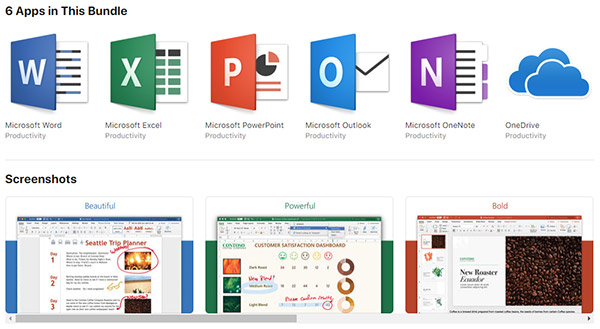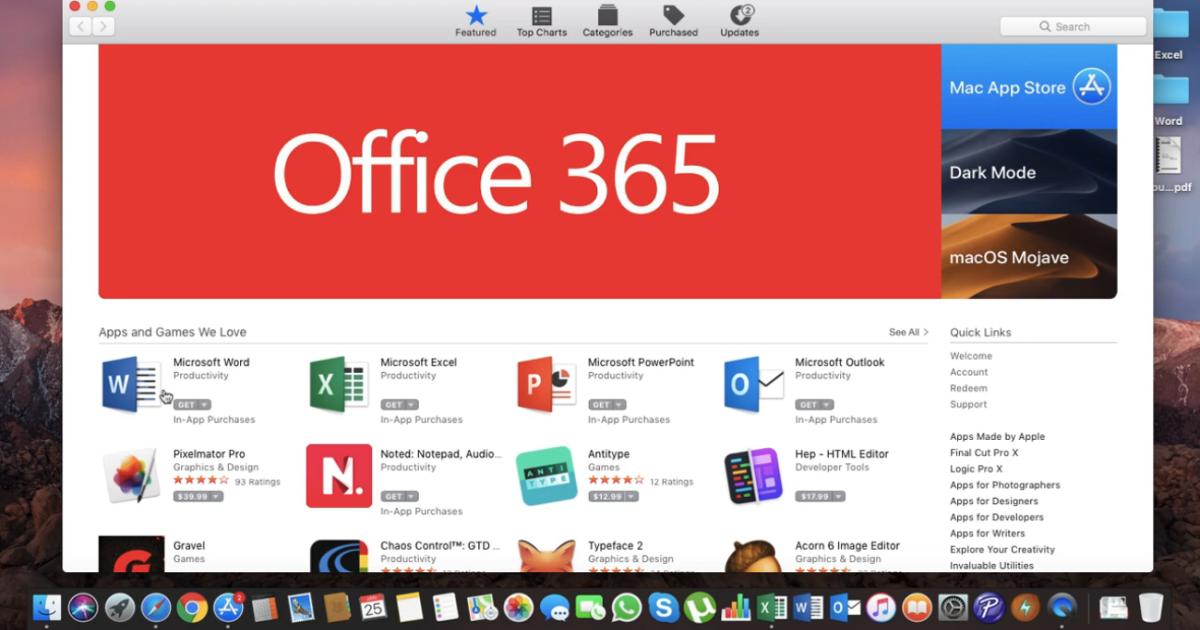

As it’s a one-click download, installation is easy enough, the apps installing into the Applications folder with icons in Launchpad. You can download individual Office apps, or the complete suite of Mac Office: Word, Excel, PowerPoint, Excel, OneNote and OneDrive.

Microsoft recently made Office available through the Mac App Store for Office 365 account holders. Microsoft requires apps to be repackaged via its own tooling ( available on GitHub) before it can be delivered through Intune. In many cases you don’t want this level of control over user devices, especially if you’re managing a bring-your-own-device policy. However, while you can use Intune to deploy tools like Office to Macs, you’re limited to using Microsoft’s own deployment tooling via the Intune company portal. As part of improved support for managing Macs as part of a corporate fleet through Intune, you can use standard Apple features to enroll devices in Intune, working with Mac-specific MDM-based management tools to apply policies and deploy apps. With support for OneDrive’s files-on-demand now available on macOS, with integration into the Finder, it’s easier to make a Mac a part of a Microsoft 365-based infrastructure. ICloud Usage Policy (TechRepublic Premium)

How to boost your iPhone’s battery chargeĬlean your Mac before you break down and buy a new one It’s even got the new Office app icons, and supports the macOS Mojave dark theme. It’s now built on the same codebase as its Windows sibling, with the same features and a user experience that mixes the latest version of the Office ribbon with familiar macOS tools. I do not have any other office applications installed.Microsoft’s macOS version of Office has had a new lease of life over the last couple of years. I have also tried using outlooks profile tool to remove the existing profile, to no effect.īut once I install the app from the Mac App Store, the blasted account is still listed. I have tried clicking "Stay Offline," to open outlook, and then open its list of accounts - there are none. I've removed the application from /Applications as well, emptied the trash, and rebooted.

I have tried in vain to remove every trace of Outlook and start over - I've removed the keychain entry for "Office," and removed more or less everything with "Microsoft" in the name in ~/Library (including the obvious stuff in ~/Library/Containers, /Library, and /System/Library. I initially tried to activate using an old account, but that account does not have an Office 365 subscription. However, the darn thing never gives me any option to do so. There is supposed to be an option to subscribe using an in app purchase - I want to use this option. Microsoft Outlook on the Mac App Store requires an Office 365 subscription.


 0 kommentar(er)
0 kommentar(er)
